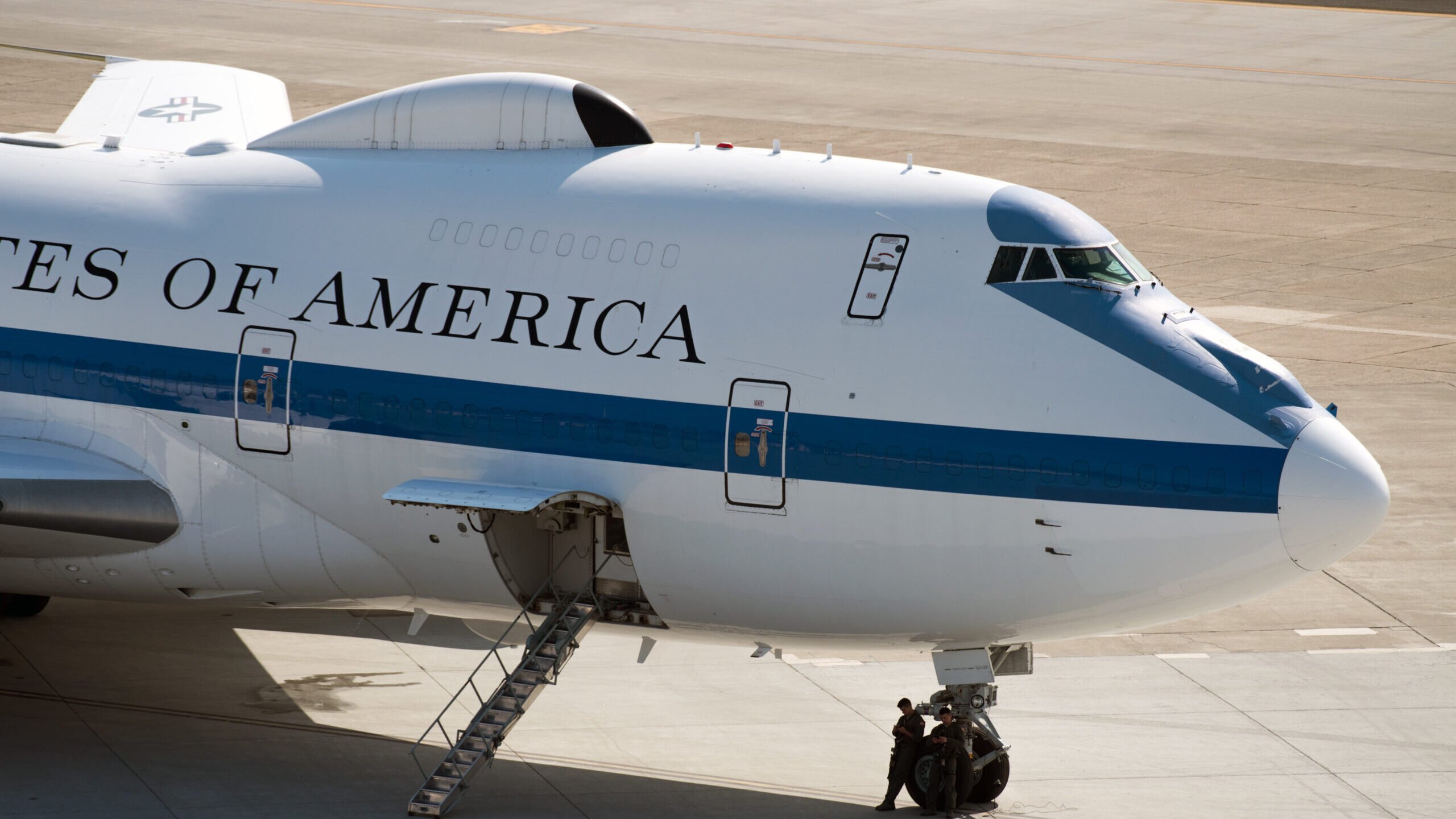
An E-4B aircraft sits on the tarmac at Travis Air Force Base, Calif., Sep. 11, 2017. (U.S. Air Force photo by Louis Briscese)
WASHINGTON: House lawmakers are worried that Air Force’s efforts to both sustain its aging fleet of E-4B “Doomsday” planes and to replace it are falling behind, leaving potential gaps in capability for nuclear command, control and communications (NC3), according to a new subcommittee markup of the 2023 National Defense Authorization Act.
The service currently maintains four National Airborne Operations Center (NAOC) aircraft originally built some four decades ago by Boeing. Based on the firm’s 747 jets, the E-4B Nightwatch aircraft were designed to provide an airborne command center for use by US leaders in case of a nuclear attack, although it also is often used to ferry the secretary of defense on trips abroad.
The Air Force’s fiscal 2023 budget request asked for $25.7 million to undertake a handful of upgrades to various subsystems to keep at least one of the radiation-hardened aircraft in the air at all times.
Meanwhile, it also is pursuing an effort to replace the faltering E-4Bs, called the Survivable Airborne Operations Center (SAOC) — but that is in the very early stages after several years of fits and starts. The fiscal 2023 budget justification documents, or j-books, show that the Air Force now plans to finalize an acquisition strategy by the end of this year, and to issue development contracts.The 2023 budget request asked for $203.2 million for the effort, up from $95.8 million in fiscal 2022.
The House Armed Forces Committee’s (HASC) strategic forces subcommittee, however, is not happy with the pace of either of those efforts.
“The committee is concerned over both the availability and capability of the current E-4B fleet and the slow progress in the development of the SAOC,” the lawmakers said in their NDAA markup released Tuesday.
The subcommittee thus directs Air Force Secretary Frank Kendall to provide the HASC with a briefing on the service’s “plan to sustain the NAOC and field the SAOC” no later than April 1, 2023.
Reviewing NC3 Governance
In addition, the markup calls upon the Government Accountability Office (GAO) to take a look at the effectiveness of the Pentagon’s governance structure for overseeing NC3 activities.
The Defense Department tapped Strategic Command (STRATCOM) as responsible for NC3 requirements, operations and systems, and in 2019 STRATCOM announced initial operational capability for the Nuclear Command, Control and Communications Enterprise Center (NEC) at Offut AFB in Nebraska.
In addition, the markup notes, DoD assigned the Office of the Under Secretary of Defense for Acquisition and Sustainment “as the NC3 enterprise capability portfolio manager” and was given “increased responsibilities for resources and acquisition” to support STRATCOM.
The goal, according to subcommittee language, was to “centralize the previously diffused governance authority and responsibility for the NC3 enterprise.”
In essence, committee aides explained in a background briefing with reporters on Tuesday, the time has come for a review of the effectiveness of that new Pentagon oversight structure. The GAO is asked to undertake a study of the NEC to assess “its ability to ensure NC3 enterprise readiness, its ability to assess future NC3 operational requirements” and other functions, and provide a briefing to the HASC no later than April 1, 2023.
Iran says it shot down Israel’s attack. Here’s what air defense systems it might have used.
Tehran has been increasingly public about its air defense capabilities, including showing off models of systems at a recent international defense expo.


























